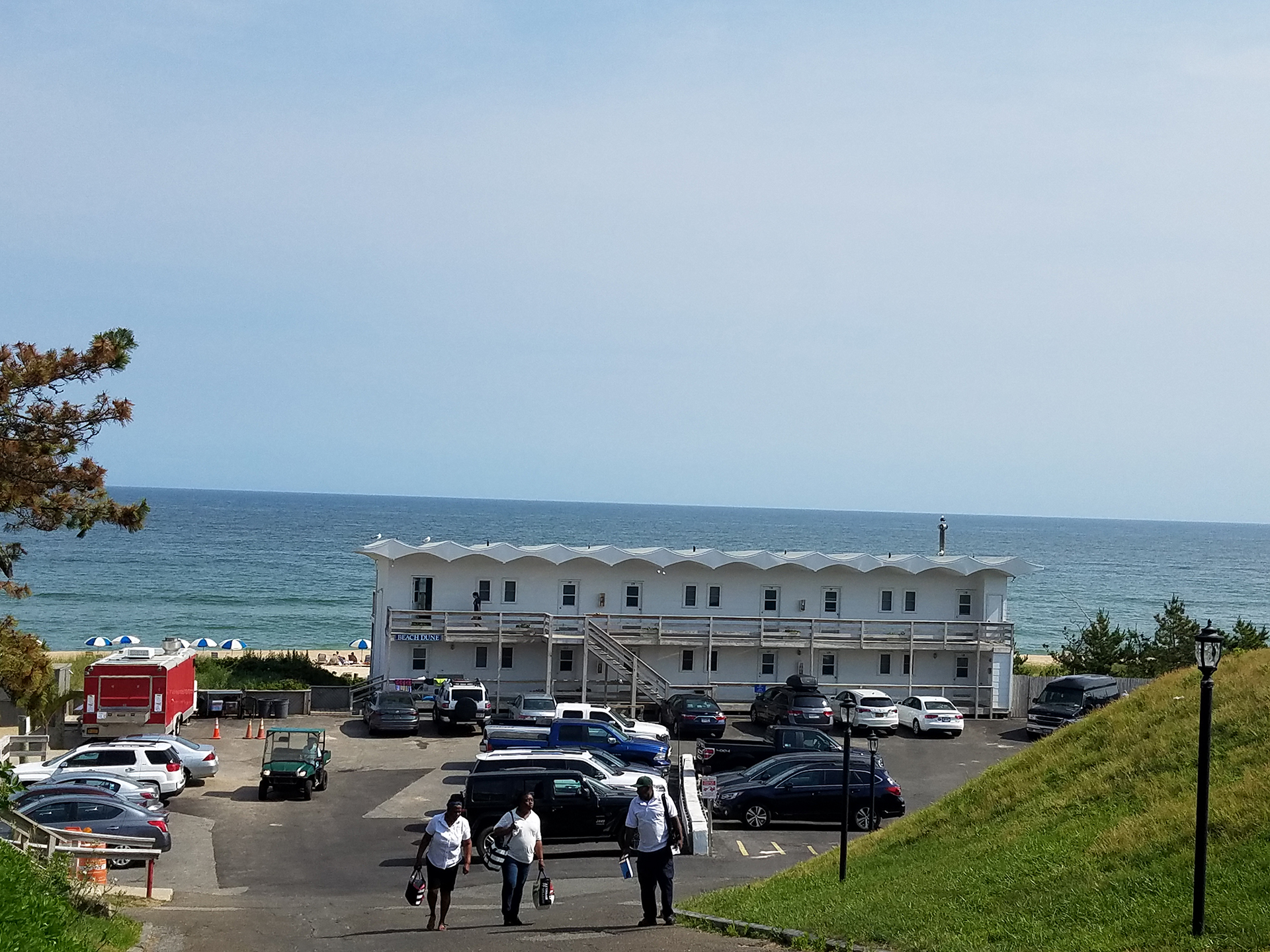Ørsted/Deepwater: We’ll Be On Time

Developers of the South Fork Wind Farm vowed this week they will deliver offshore wind power to East Hampton by 2022 as promised.
Despite the ever-present optimism, the wind farm has lagged behind its own timetable as it faces a concerted effort to deep-six the project from several
opposition groups.
First, a group of well-heeled Wainscott residents banded together and issued an explicit warning to Ørsted, the parent company that purchased Deepwater Wind: Find another landing spot for your offshore cable to land.
The opposition caught the attention of Thomas Borstrom, the CEO of Ørsted, who wrote a letter to the Citizens for the Preservation of Wainscott.
“We have always said there are two viable cable landfall and onshore route options for our project,” he wrote. “In response to your requests, our team assessed the viability of a Hither Hills landing site . . . we believe Hither Hills is a technically viable alternative.”
The ink was barely dry on Borstrom’s May 31 letter when Montauk and Amagansett residents and business owners lambasted the idea of bringing the cable ashore in Montauk. “It’s a terrible, terrible idea. It’s going to be terrible not just for Montauk but for everyone who drives,’” said Kathy Weiss, who runs Wavecrest, a 75-unit resort complex, on Old Montauk Highway.
The parking lot for Hither Hills State Park, located adjacent to her property, is the proposed cable landing spot. “Right next to the state camp grounds, where they just installed a new septic system,” Weiss said.
Business owners throughout the Montauk corridor are now banding together.
There are a dozen similar resorts to the Wavecrest along Old Montauk Highway and the Napeague Stretch. The two-lane highway they share has little shoulder space.
Ørsted officials acknowledged at a recent public hearing that it would likely take upward of two years to lay the cable underground and run it to the LIPA substation on Cove Hollow Road in East Hampton. That’s a year more than the original timeline, yet Ørsted this week insisted that the wind farm would be operational by 2022.
“The amount of time required for either route will depend on a number of factors, including which route receives final approval and the number of construction crews we employ,” said Meaghan Wims, Ørsted’s director of public affairs.
Jennifer Garvey, Long Island development manager for the company, said at a public hearing last month the Wainscott landing could be completed in less than one year. She said, in either case, care would be taken to avoid impeding roadways.
Bonnie Brady, a fishing industry advocate, pointed out that Ørsted has yet to address other factors that could cause significant delays: For example, there may well be fish spawning grounds in areas where the cable is going to be brought ashore. If so, work will come to a halt in those areas, at least if environmentalists have a say.
Other states like Rhode Island and Massachusetts, where commercial fishing interests have more review clout, are coming down against wind farms.
The Edgartown Conservation Commission in Massachusetts voted 5-1 June 10 to deny the construction of two undersea cables that would connect the nation’s first industrial-scale, 84-turbine wind farm, Vineyard Wind, to mainland Massachusetts.
Though not an Ørsted project, Vineyard Wind’s failure to adequately report on the effect its turbines will have on marine life proved its undoing, and fishing groups hereabouts are livid about the short shrift.
Commissioners sided with fishermen over climate activists — two groups at odds in New York over wind power — and expressed doubts about Vineyard Wind’s propose.
The South Fork Wind Farm has been behind schedule since 2018 when then-Deepwater officials told East Hampton Town officials that it first needed an easement to bring a cable from its offshore wind generators onshore in Wainscott.
A Deepwater vice president, Clint Plummer, told the town Deepwater needed approval by June 30, 2018 as a prerequisite to keep the project on time and begin the state review.
But Town Councilman Jeffrey Bragman checked with the state and was told Plummer was mistaken. The matter delayed the filing almost three months.
The Bureau of Ocean Energy Management, a federal agency that must also sign off on the 15-turbine wind farm, was asked by Ørsted to temporarily halt the “environmental review of the Deepwater Wind’s construction and operations plan” while the company tweaked the design of the system.
That means BOEM will have to review the company’s draft environmental impact statement, probably in the fall, and open it up for public comment again, a year after it was scheduled to take place. Yet Ørsted officials bristled when it was suggested the project would be delayed accordingly.
Ørsted’s only functioning wind energy project on Block Island has been beset with a recurring problem: The undersea electric cables from the nearby offshore wind facility have been exposed at one of Block Island’s most popular beaches.
The power line from the five-turbine Block Island Wind Farm reaches shore at Fred Benson Town Beach and leaves the island for Narragansett at Crescent Beach to the north. But keeping portions of the cable buried at Crescent Beach has been a struggle.
According to ecoRI News, “The problem has persisted since 2016. National Grid and Ørsted blame subsurface bedrock and boulders from preventing the cables from staying buried at a mandated depth of four to six feet into the sea floor.”
Such a scenario would be a disaster in East Hampton, visually and environmentally, and a PR nightmare for Ørsted.
It all leaves PSEG, the electric provider that was counting on the wind power to meet peak demand in East Hampton, in a precarious spot: What if the project doesn’t pan out?
“We can’t comment on the specifics,” said Jeremy Walsh, a PSEG spokesman. “We are committed to delivering safe, reliable power through 2022 and beyond.”
rmurphy@indyeastend.com



